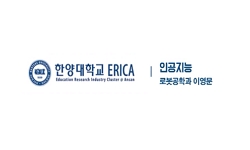염해는 콘크리트 구조물의 가장 중요한 열화요인중 하나이다. 염해에 대한 정량적인 평기를 위해서는 자유염화물의 확산거동을 직접적으로 지배하는 확산계수가 정확하게 도출되어야 하지...
http://chineseinput.net/에서 pinyin(병음)방식으로 중국어를 변환할 수 있습니다.
변환된 중국어를 복사하여 사용하시면 됩니다.
- 中文 을 입력하시려면 zhongwen을 입력하시고 space를누르시면됩니다.
- 北京 을 입력하시려면 beijing을 입력하시고 space를 누르시면 됩니다.
신경망 이론과 마이크로 모델링을 통한 혼화재를 사용한 콘크리트의 염화물 침투해석 = Analysis of Chloride Penetration in Concrete with Mineral Admixtures using Neural Network Algorithm and Micro Modelling
한글로보기https://www.riss.kr/link?id=A76576739
- 저자
- 발행기관
- 학술지명
- 권호사항
-
발행연도
2007
-
작성언어
Korean
- 주제어
-
KDC
531
-
등재정보
구)KCI등재(통합)
-
자료형태
학술저널
-
수록면
117-129(13쪽)
- 제공처
- 소장기관
-
0
상세조회 -
0
다운로드
부가정보
국문 초록 (Abstract)
염해는 콘크리트 구조물의 가장 중요한 열화요인중 하나이다. 염해에 대한 정량적인 평기를 위해서는 자유염화물의 확산거동을 직접적으로 지배하는 확산계수가 정확하게 도출되어야 하지만 다양한 배합에 적용하기에는 많은 시간과 경비가 필요하다. 기존에 사용되는 물-시멘트비에 대한 회귀분석식으로 표현되는 확산계수식은 주로 겉보기 확산계수이며 시멘트량, 골재량 등의 다양한 배합변수를 고려할 수 없으므로 혼화재를 사용한 콘크리트의 확산계수 도출에 사용되기는 어렵다. 본 연구에서는 신경망 이론을 이용한 염화물 확산계수의 도출과 이를 고려한 혼화재를 사용한 콘크리트의 염화물 침투예측기법을 개발하였다. 이를 위해, 다양한 혼화재료(고로슬래그 미분말, 플라이 애쉬, 실리카 퓸)를 사용하여 제조된 콘크리트에 대하여 시간에 따른 염화 물 촉진실험을 수행하였으며, 염화물 이온의 확산계수를 도출하였다. 도출된 확산계수에 대해서 7개의 배합인자 및 수중양생기간을 뉴런으로 설정한 뒤,30개의 배합, 120개의 확산계수측정값에 대하여 오차 7%의 학습을 수행하였다. 이후 신경망 이론을 통하여 도출된 확산계수는 초기재령 콘크리트의 거동을 나타내는 다상수화발열모델과 공극구조 형성모델에 기초한 염화물 침투 해석에 이용되어 수치해석을 수행하였으며, 실험결과와의 비교를 통하여 검증하였다. 개발된 염화물 해석방법은 기존의 혼화재료를 사용한 콘크리트의 염화물 침투 실험지료에 대해 적용한 결과, 타당한 해석결과를 나타내고 있음을 알 수 있었다.
다국어 초록 (Multilingual Abstract)
Chloride attack is one of the major deteriorations in concrete structures. In order to quantify chloride behavior in concrete, accurate prediction of ditfusivity coefficient of chloride ion is necessary. In conventional prediction equations, the appar...
Chloride attack is one of the major deteriorations in concrete structures. In order to quantify chloride behavior in concrete, accurate prediction of ditfusivity coefficient of chloride ion is necessary. In conventional prediction equations, the apparent diffusivity coefficient is expressed only with the water to cement ratio (W/C), i.e., the detailed mix proportions of concrete are not considered to obtain the diffusivity coefficient of concrete with mineral admixtures. In this study, a numerical technique for chloride penetration in the concrete with mineral admixtures using diffusivity coefficient from neural network algorithm is proposed. In order to obtain the comparable data set considering various mineral admixtures such as ground granulated blast-furnace slag (GGBFS), fly ash (FA) and slica fume (SF), a series of rapid chloride penetration tests are performed and a limited number of diffusivity coefficients are obtained. Total eight neurons (seven material components in trial mixture designs and curing period in submerged condition) are used for neural network. Through the neural network, 120 diffusivity coefficients from 30 mixture designs are obtained and the average of analyzed data is evaluated to be about 7%, which can be statistically acceptable. Finally, an evaluation technique for chloride penetration in the HPC is also developed by utilizing multi component hydration heat model (MCHHM) and micro pore structure formation model (MPSFM) along with obtained diffusivity coefficients from neural network. The applicability of the developed technique is also verified by comparing the simulation results with experimental results as well as other data.
목차 (Table of Contents)
- Abstract
- 요지
- 1. 서론
- 2. 인공신경망을 이용한 확산계수 추정
- 3. 염화물 침투 해석의 개요
- Abstract
- 요지
- 1. 서론
- 2. 인공신경망을 이용한 확산계수 추정
- 3. 염화물 침투 해석의 개요
- 4. 실험결과와의 비교 분석
- 5. 결론
- 참고문헌
동일학술지(권/호) 다른 논문
-
표면매립보강재를 이용한 철근콘크리트보의 휨보강에 대한 연구
- 대한토목학회
- 정우태(Jung Woo Tai)
- 2007
- 구)KCI등재(통합)
-
- 대한토목학회
- 조창빈(Joh Changbin)
- 2007
- 구)KCI등재(통합)
-
- 대한토목학회
- 이재석(Lee Jae Seok)
- 2007
- 구)KCI등재(통합)
-
- 대한토목학회
- 이병구(Lee Byoung Koo)
- 2007
- 구)KCI등재(통합)




 ScienceON
ScienceON DBpia
DBpia







